Chief Engineer's Log
"your guide to maritime engineering education".


What you need to know about electrical preferential tripping and sequential restarting
Onboard vessels, modern power management systems make it less likely for power to go out for no reason, but engineers must be familiar with the specific procedures, where to find the instructions and procedures, and ready to act in case of automation failure.

Example of Power Management System
In case of a problem with power main diesel generators or in case of overcurrent, non-essential loads are interrupted automatically, in order to prevent the ship’s power failure. Preferential tripping has been fitted to reduce the possibility of the loss of essential vessel supplies if an event as described above will occur. It has been arranged that load reduction will be achieved by an ordered disconnection of non-essential supplies to prevent a blackout that may put the vessel’s safety at risk.

Example of preferential trip alarm
Depending on the vessel electrical layout and design, there are different stages (two or three) of preferential tripping. For example:
- if the current on a running generator exceeds 100% of the generator rating for a period exceeding 5 seconds, the PMS will initiate the release of the 1st stage preferential tripping (PT1), thereby providing protection against the overcurrent which would otherwise trip the circuit-breaker – non critical ship systems.
- if the current on a running generator exceeds 100% of the generator rating for a further 5 seconds, the PMS will initiate the release of the 2nd stage preferential tripping (PT2) – cargo hold vent fans and packaged air conditioning units.
- in some vessels if the current on a running generator exceeds 100% of the generator rating for a further 5 seconds, the PMS will initiate the release of the 3rd stage preferential tripping (PT3).

Example of 1st and 2nd stage preferential trips alarm
on some other systems the preferential trips can be triggered in three ways regardless of the generator being under PMS or manual control:
- an overcurrent condition in a main generator for a preset time will initiate first stage trips – if the current on a running generator reaches 120 % of the rated full load current for a period of 10 s, the breaker overcurrent protection circuit will initiate the release of the first stage of preferential tripping. If the 120% overload condition should continue for 40 seconds the generator VCB itself would trip, initiating the 2nd stage trip.

Example of DG overcurrent alarm leading to preferential trip alarms
When normal conditions resume, the tripped breakers must be manually reset.
- low lubricating oil pressure
- high fresh water cooling temperature
- overspeed of generator engine
- short-circuit current
- nuisance trip
Should such trip occur then the remaining preferential trips will operate simultaneously.
- manual tripping – the bus tie panel carries emergency stop contacts and preferential trips.
To trip the specific consumers, their circuit breakers are fitted with undervoltage (UV) trips. The supply to these UV trips is interrupted by the preferential tripping relays.

Example of UVT trip device
The identifications labels of the consumers configured for preferential tripping are coloured yellow with either PT1, PT2 or PT3 engraved into them.
Preferential tripping stages are accompanied by alarms into the alarm and monitoring system.
The vessel’s automatic control system will automatically restart the required machinery to restore power to the vessel, but to fulfil this requirement, at least one diesel generator must be left in the automatic standby mode. The essential machinery is started automatically according to the example sequence shown below.

Example of sequential restart list
The sequence is started when power is restored to the 440V main switchboard. The restart sequence is usually left enabled, however, the operator may disable the sequence, and if the sequence is disabled, an ‘auto start sequence disabled’ alarm is raised. The sequence is automatically halted in the case of another blackout.
When normal power is restored after a blackout, all essential service machinery in service before the blackout will be started automatically when the main switchboard has regained power. Motors that were selected for duty before the blackout will be automatically returned to duty when power is restored. Similarly, motors selected for standby will automatically return to standby. If the machinery designated for duty does not restore normal system conditions, such as pressure, within a preset time, the standby motor will cut in automatically. If power is only restored to the emergency switchboard, motors whose supply is from the emergency switchboard will start irrespective of any previous selection. In the event of a blackout all transformers in the HVS will switch off. After the first main generator is connected to the HV busbar the transformer outlets will automatically switch in sequentially in two steps, depending upon the part of the switchboard concerned.
If you have any questions regarding above, please feel free to use our existing forum Seafarer’s World and will try to answer to all your queries.
If you like my posts, please don’t forget to press Like and Share. You can also Subscribe to this blog and you will be informed every time when a new article is published. Also you can buy me a coffee by donating to this website, so I will have the fuel I need to keep producing great content! Thank you!
Partajează asta:
- Click to share on Facebook (Opens in new window)
- Click to share on Reddit (Opens in new window)
- Click to share on LinkedIn (Opens in new window)
- Click to share on Twitter (Opens in new window)
- Click to share on WhatsApp (Opens in new window)
- Click to share on Pocket (Opens in new window)
- Click to share on Tumblr (Opens in new window)
- Click to share on Pinterest (Opens in new window)
- Click to share on Telegram (Opens in new window)
Please feel free to leave a reply! Cancel reply
Discover more from chief engineer's log.
Subscribe now to keep reading and get access to the full archive.
Type your email…
Continue reading
- MEO Class 4
- _Epareeksha MCQ
- Machineries
- _Main Engine
- _Aux Engine (D/G)
- _Air Compressor
- _Freshwater Generator
- _Hydrophore
- _Refrigeration
- Naval Arch.
- Electricity
Preferential Trips Generators
Post a comment.
>> Your Comments are always appreciated... >> Discussion is an exchange of knowledge It Make the Mariner Perfect.... Please Discuss below...
Our website uses cookies to improve your experience. Learn more
Contact Form

- Watchkeeping
- Maersk Bear
Select Page
The use of maritime prefferential tripping
Posted by Ryan Oneill | Aug 3, 2023 | Electrical , Engine Room , Latest Articles | 0 |

In a marine electrical distribution system, “preferential tripping” refers to a protective scheme that selectively trips or disconnects specific electrical circuits or equipment in a predetermined order during fault conditions or abnormal situations. The goal is to prioritize the protection of critical or essential equipment and systems while maintaining the overall stability and safety of the vessel’s electrical system.

Here’s how preferential tripping works in a marine electrical distribution system:
- Electrical Fault Detection: The electrical distribution system is equipped with protective devices such as circuit breakers, fuses, relays, or other protective devices. These devices constantly monitor the current, voltage, and other parameters in the electrical circuits.
- Predefined Priority: The system’s design includes a predetermined priority list of electrical circuits or equipment based on their criticality to the ship’s operation. For example, essential services like propulsion, steering, communication, and safety systems might be assigned a higher priority than non-critical systems.
- Fault Occurrence: When an electrical fault occurs, such as a short circuit or overload in a specific circuit or equipment, the protective devices detect the abnormal condition.
- Tripping Sequence: Instead of indiscriminately tripping all the protective devices simultaneously, the preferential tripping system follows the predefined priority list. It starts by tripping the least critical circuits or non-essential equipment first, gradually moving towards more critical systems.
- System Stability: The preferential tripping scheme aims to maintain the overall stability of the electrical distribution system during fault conditions. By ensuring that critical systems remain operational for as long as possible, the vessel has a better chance of avoiding a complete blackout or loss of essential services.
- Fault Isolation: Once the fault is cleared or isolated in a particular circuit or equipment, the system may automatically or manually restore the power to that circuit, if possible, to resume normal operations.
Preferential tripping is particularly crucial in marine electrical systems, as a complete loss of power or critical systems can pose significant risks to the vessel’s safety and operation. By selectively disconnecting less critical loads first, the ship’s crew can have more time to address the fault and avoid catastrophic consequences.

Working of Preferential Trip
As shown in the diagram, when overload current increases and reaches the lower loads of the system,the bottom lever pulls up and completes the circuit. The completion of the system gives an alarm signal and supplies current to the overload trips which are set for 5, 10 and 15 seconds delay.
If the overload current is extremely high,the upper levers of the system get trip, which instantaneously cuts off the the generator thus preventing it from any kind of damage.
5 second Air – conditioning and ventalation
10 second Refrigerated cargo plant
15 second Deck equipment
It’s important to note that the specific implementation of preferential tripping can vary based on the vessel’s design, the complexity of the electrical system, and the specific requirements of the ship’s classification society and regulations. Proper planning, design, and testing of the preferential tripping scheme are essential to ensure the safety and reliability of the marine electrical distribution system.
About The Author
Ryan Oneill
Ryan O'Neill is a well-known maritime enthusiast and writer who has dedicated his life to studying and writing about ships and the maritime industry. With a deep passion for the sea and all things nautical, Ryan has spent years exploring the world's oceans and studying the history and culture of seafaring.
Related Posts
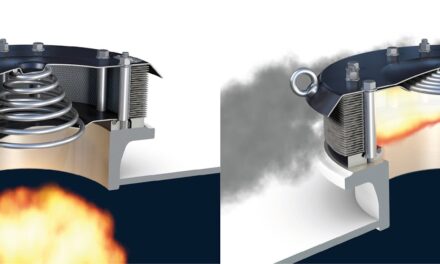
SOLAS – Crankcase Door Regulations
15 August 2023

What Is the Difference Between a 2-Stroke and 4-Stroke Engine?
19 February 2023

The Process of Hazardous Cargo Acceptance & Shipment
16 August 2023
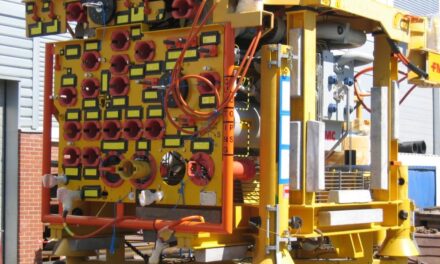
Subsea Xmas Tree
3 August 2023
Recent Posts

Our Authors

Understanding Power Management System: How To Reduce Power Consumption On Ships
Power conservation and management is an integral part of operations on board ships. Nowadays, ship engineers are specifically advised to inculcate best power saving practices while carrying out on various on board operations.
Power management on ships comprises of two main aspects:
a. Automatic Power Management Systems: Using automation to conserve power.
b. Using best practices and management guidelines to reduce power consumption.
Most modern day ships today are built with provisions for periodically unattended machinery spaces (PUMS). On such vessels, automatic power management system (PMS) plays a role, which is of utmost vitality. Not only does the PMS does away with manual synchronisation of generators, it efficiently regulates the number of generators on the busbar according to the changing load.
Some of the major functions performed by the PMS are as follows:
- Cutting in and out of the generators according to increase and decrease of load.
- Gradually loading and unloading of generator alternator sets, so as to minimise thermal and frictional stresses.
- Performing load sharing operations among the generators symmetrically or asymmetrically (depending on auto/manually set parameters).
Diesel generators are the primary components of the PMS. All generators have a maker’s specific minimum, maximum load criteria, and optimum load criteria. When the generators are synced with the ship’s PMS, engineers have the option of changing the minimum and maximum point beyond which, the generator cannot be loaded. This is to prevent various stresses on the physical components of the generator.
The loading and unloading of power from the alternator of the generator is driven by time lag functions, which often means, that a sudden spike in the load cannot be compensated by the PMS. A hardwired preferential trip, then, becomes, an essential requirement of the system in order to prevent sudden blackout.
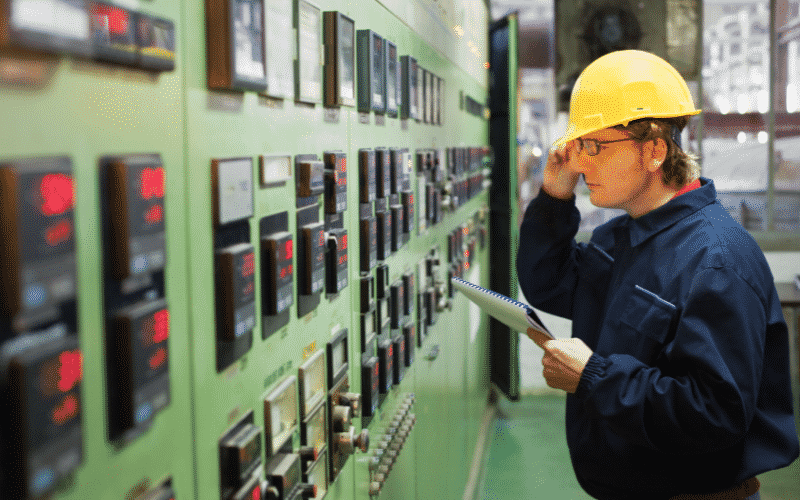
Some ships are also fitted with a shaft motor, which not only compensates for a sudden drop in load, but also, minimises shaft torque on engines with a long propulsion shaft. Another advancement in technology has been in the form of a combined Shaft Motor/Generator set which is regulated by the PMS.
When generator sets are run in parallel, including, shaft generators , diesel generators and/or steam driven turbine generator, the PMS almost completely regulates the load on each component. Generally, in case of generators with equal load capacity, the load on the bus bar is distributed symmetrically on the alternators. However, different kinds of power generating machines, having different maximum an optimum load, the PMS distributes asymmetrically.
For efficient fuel consumption, it is always desirable to run the minimum number of generators, each at a load that is optimum. For instance, one generator running at 30% load may be more fuel efficient than 2 running at 15% and, conversely, one generator running at 70% may consume more fuel than 2 running at 35% load each. Thus, performance evaluation of generators according to their maximum and optimum rated capacity must be carried out regularly.
At the start of each voyage, marine engineers must discuss the power management plan and consider various factors like, number of reefers onboard, use of stabilisers during the voyage, maintenance to be carried out on any generator during the voyage to determine which and how many generators to run. An unexpected breakdown in the generators may require cutting down on the power consumption. Let’s take a look at a few factors which would help in smart reduction of consumption of power.
1. Reefers – Container ships, also, designed to carry reefers , will, of course consume a higher power with the increase in the number of live reefers onboard. Stowage plans must be checked so that reefers requiring ventilation would be carried on open decks. Where placed in cargo holds, efficient usage of reefer cooling water system is a much more economic way than using heavy inlet and exhaust fans for cargo hold ventilation. Thus, it is imperative the fresh water cooling system for reefers, which includes fresh water and sea water pumps, expansion tank and pipelines are kept in good working condition.
2. Ballast pumps – Most ballast pumps are heavy duty pumps which consume a lot of power. Ballast plans should be formulated with the aim of using ballast pumps only when required. Filling of tanks, where practical, must be carried out by gravity. Similarly, use of ejectors only while final stripping of tanks and not continuously while deballasting , reduces usage of pumps and eventually power.
3. Fuel Transfer pumps- Usage of service steam effectively to heat the fuel in storage tanks is an important power reduction factor. Fuel to be transferred must be kept at the temperature mentioned in the fuel specification document. Low temperatures of fuel result in frequent tripping of the pumps, not to mention, prolonged running of the pumps to transfer the same amount of fuel.
Related Read:
- 10 Practical Tips To Handle Engine Room Pumps
- 7 Common Problems Found in Pumps On board Ships
4. Air compressors- Any air leaks in the start air or service and working air must be repaired as soon as detected to prevent continuous running of compressors and to prevent frequent loading/unloading of compressors. Running hours of the compressors must be looked at closely and planned maintenance on the compressors must be carried out according to maker’s specification.
5. Fresh water- Most ships today use hydrophore tanks to pump fresh water for domestic and other purposes. These tanks must be topped up frequently with air, so as to minimise frequent running of hydrophore pumps to achieve the set pressure in the tank.
6. Central Cooling water system- Care must be taken when establishing the number of sea water, high temperature and low temperature pumps which are running. Sometimes, additional pumps may start resulting in higher power consumption.
7. Engine room ventilation- Ventilation fans are also large consumers. Engine room pressure and temperature must be carefully evaluated so as to run only the required number of fans. Where fan motors are dual speed or of a variable frequency type, selection of lower speeds, where practical, go a long way in reducing power consumption.
8. Lights – A simple, yet largely unpractised factor is switching off lights which are not in use. Cargo hold lights, steering gear room lights, deck lights should be switched on only when in use. This practice will go a long way in curtailing power consumption.
The above clearly shows how important planning a voyage is in order to minimise consumption of power. Considering the number of ship operations carried out on board ships, close coordination among deck and engine departments is absolutely essential, perhaps more important than the PMS itself.
Over to you..
What according to you are the most important points for an efficient power management on board ships.
Let’s know in the comments below.
Image credits: © Carabay – Fotolia.com
You may also like to read:
Important Points To Comply With Ship Energy Efficiency Management Plan
Disclaimer : The information contained in this website is for general information purposes only. While we endeavour to keep the information up to date and correct, we make no representations or warranties of any kind, express or implied, about the completeness, accuracy, reliability, suitability or availability with respect to the website or the information, products, services, or related graphics contained on the website for any purpose. Any reliance you place on such information is therefore strictly at your own risk.
In no event will we be liable for any loss or damage including without limitation, indirect or consequential loss or damage, or any loss or damage whatsoever arising from loss of data or profits arising out of, or in connection with, the use of this website.
Do you have info to share with us ? Suggest a correction
Latest Marine Technology Articles You Would Like :
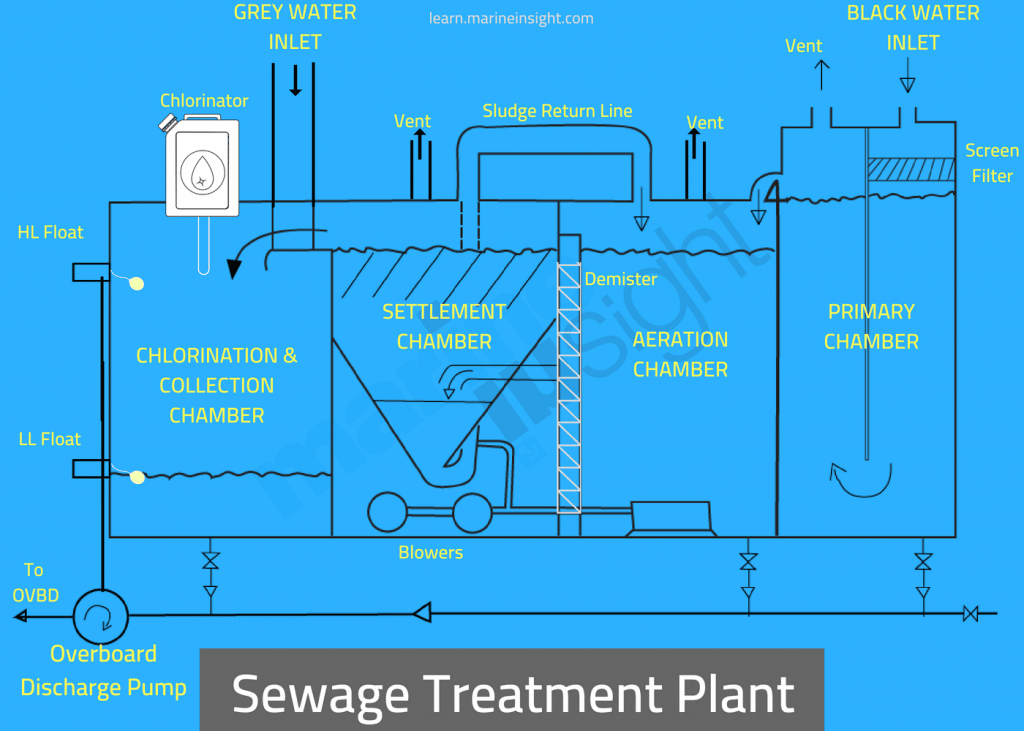
Sewage Treatment Plant on Ships Explained

What is Eductor On a Ship?

What is an EchoSounder?

Practical Sample Kits by Normec MTS Allow the Crew to Take Water Samples Themselves

The Essential Guide to Bow Thruster Construction and Functionality

8 Biggest Ship Propellers in the World

Daily Maritime News, Straight To Your Inbox
Sign Up To Get Daily Newsletters
Join over 60k+ people who read our daily newsletters
By subscribing, you agree to our Privacy Policy and may receive occasional deal communications; you can unsubscribe anytime.
I have a objection at one point, we can simply not switch off the lights of cargo holds or steering gear room or simply we can say any area of engine room, lights from accommodation can be switched off whenever those are not required or else lights doesn’t make a much difference at all.
good marine insight, nevertheless let me share some few points here, there some vessels that as well has the sea water hydrophore systems they should as well be managed, they should be used when very necessary. as well putting of the cabin light is a good suggestion, but dont you think it can either make the room or cabin either more hotter or colder, thereby after the crew onboard, considering the fact that every before the vessel was commissioned to sail, each vessel cabin had a cooling load estimation calculated and determined as well. so that even the light point functions in a two way traffic, it helps to light up the cabin and as well helps to balance the cooling load estimation.
please help me with more light in marine because i am a engine cadet in a ship.
hi all nice to see your discussions i am doing my ph.d in electrical i am currently working in war ship building industry ,can u someone tell me how to choose research topic in electrical war ships
Leave a Reply
Your email address will not be published. Required fields are marked *
Subscribe to Marine Insight Daily Newsletter
" * " indicates required fields
Marine Engineering
Marine Engine Air Compressor Marine Boiler Oily Water Separator Marine Electrical Ship Generator Ship Stabilizer
Nautical Science
Mooring Bridge Watchkeeping Ship Manoeuvring Nautical Charts Anchoring Nautical Equipment Shipboard Guidelines
Explore
Free Maritime eBooks Premium Maritime eBooks Marine Safety Financial Planning Marine Careers Maritime Law Ship Dry Dock
Shipping News Maritime Reports Videos Maritime Piracy Offshore Safety Of Life At Sea (SOLAS) MARPOL
WAIT! Did You Download 13 FREE Maritime eBooks?
Sign-up and download instantly!
We respect your privacy and take protecting it very seriously. No spam!
WAIT! Did You Download 12 FREE Maritime eBooks?
- Project Management – Dry Docking and Repairs
- Ship Services
- Marine CAD Services
- Marine IT Services
- Academic services
- MEO Class 1
- MEO Class 2
- MEO Class 4
- ASM / Masters
- Class IV Level
- Academic Papers
- Year/Month Sets
- Shirts & Trousers
- Deck Officers
- Engineer Officers
- Coveralls / Boiler Suits
- Marine Uniform Shirts & Trousers
- Epaulettes for Marine Deck Officers
- Epaulettes for Marine Engineer Officers
- Marine Belts | Peak cap | Accessories
- Marine Accessories
- Marine Engineering – General
- Marine Engineering – Motor
- Marine Electro Technology
- Ship Safety & Naval Architecture
- MMD Procedures
- Merchant Navy Courses
Preferential tripping in a marine electrical distribution system
- 21 May 2016
Preferential tripping in a marine electrical distribution system are designed to disconnect non-essential circuits (e.g. breakers controlling air conditioning, galley power, blowers, refrigeration etc.) in the event of partial overload or partial failure of the supply, with the aim of preventing operation of the main breaker trip and loss of power on essential services.
- A method for operating all the overload type trips from one load current carrying coil uses two instantaneous trip levers.
- The top lever is arranged as an instantaneous short circuit trip and opens the breaker directly through mechanical linkages.
- The bottom lever closes instantly at the lower overload current setting and by doing so, completes the circuit through two (or more) non essential circuit trips and a main breaker trip, all incorporating dashpot time delay.
- These relays will trip out non essentials at 5 and 10 second intervals based on their priority and finally, if the over load persists, the main breaker after 15 sees.
- Warning of overload is given by the alarm. Overload protection is provided on both poles.
Working of preferential trip
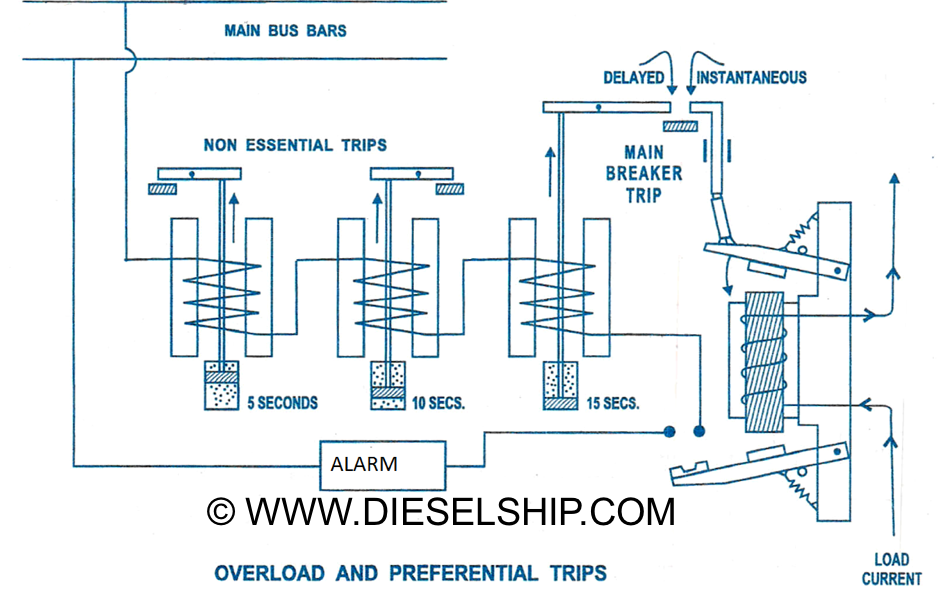
- The current passes through the electromagnetic coil and the linkages are kept from contacting using a spring arrangement. As soon as the current value increases the limit, the electromagnetic coil pulls the linkage up against the spring force and operates the instantaneous circuit and the alarm system. The lower linkage completes the circuit for the preferential trip circuit.
- The current passes through the coil in the preferential trip circuit which pulls the piston in the dashpot arrangement. The movement of this piston is governed by the diameter of the orifice and the time delay made by the same.
- The preferential trip operates at 5, 10 and 15 seconds and the load is removed accordingly. If the overload still persists, then an audible and visual alarm is sounded.
One thought on “ Preferential tripping in a marine electrical distribution system ”
sir, how to test the preferential trip ?

Leave a Reply Cancel reply
Your email address will not be published. Required fields are marked *
Follow us on Social Media
Username or email address *
Password *
Note: Entering wrong username in the login form will ban your IP address immediately. Entering wrong password multiple times will also ban your IP address temporarily.
Lost your password? Remember me
No account yet?

Preferential Trip
- Preferential trip is a kind of electrical arrangement on ship which is designed to disconnect the non essential circuit that is non essential load from the main bus bar in case of partial failure or overload of the main supply the non essential circuit all loads on ship are air conditioning, exhaust and ventilation fans, and galley equipments which can be disconnected mementarily and can be connected again after fault finding.
- The main advantage of preferential trip is that it helps in preventing the operation of main circuit breaker trip and loss of power on essential services and prevents blackout and overloading of generator.
No comments
Adertisement, buy at amazon, maritime news, contact form, blog archive.
- RECREATIONAL ITEMS
- MEO Class 4 preparation Notes by Nithin
- IMPORTANT REFERENCE BOOKS FOR GME (GRADUATE MARINE...
- ELECTRICAL ORAL NOTES PREPARED BY SAMUDRA INSTITUTE
- Complete List Of courses for Indian seafarers , an...
- Function : 6 - MEO Class 4 Orals : MEP or MROL [Maintenance and Repairs at Operational Level]
- Function : 4b - MEO Class 4 Orals : MOTOR or MEOL[Marine Engineering at Operational Level]
- Function : 3 - MEO Class 4 Orals : SAFETY or COSCOPOOL
- Function : 5 - MEO Class 4 Orals: Electrical or( EECEOL)
- MEK (Motor) - written
- Marine Electro Technology - written
- MEP - written
- NAVAL ARCH NUMERICAL.
- Ship Construction and Stability (Naval Arch) -written
- Ship Safety and Environmental Protection - written
- MEK (General) - written
- MEO Class 4 Orals questions asked mostly by surveyors in all MMD orals.
Copyright (c) 2020 marineengineersknowledge All Right Reseved
Academia.edu no longer supports Internet Explorer.
To browse Academia.edu and the wider internet faster and more securely, please take a few seconds to upgrade your browser .
Enter the email address you signed up with and we'll email you a reset link.
- We're Hiring!
- Help Center

A Guide to Ship's Electro-Technology

Related Papers
Prabir Datta
Eberechukwu Okoagha
CALIFA7SEAS MARITIME ACADEMIA HANDBOOK - PART 7: QUALIFICATION AND COMPETENCE
Engr. Khairulmuzammil YUZRI
konstantinos triantafillou
Miran Stefan
Ahmed Ghowel
Marine Electrical Knowledge
Chetna Goyal
HANNAH LEESE
win htun aung
Zaheer Are-Qkim
RELATED PAPERS
Debby Debby
Abdullah al Mamun
Christian Villa
Raphael Onyiaorah
Nguyen Van Phu
SYED MUDASSIR NAZAR
Daniel Charles
Federico Sanchez
ประดิษฐ์ โคตวงษ์
Evenso Ndlovu
Minhlongevn BD
Charles Conconi
Francisco Almonacid
nino slosar
Vinit Kant Majumdar
bagus istiyawan
Salman Farizy
Debebe Tsedeke
Sudipta Chatterjee
- We're Hiring!
- Help Center
- Find new research papers in:
- Health Sciences
- Earth Sciences
- Cognitive Science
- Mathematics
- Computer Science
- Academia ©2024

WHAT IS PREFERENTIAL TRIP AND REVERSE POWER TRIP ?
Preferential trip:.
Preferential trip is a kind of electrical arrangement on ship which is designed to disconnect the non-essential circuit i.e. non-essential load from the main bus bar in case of partial failure or overload of the main supply The non-essential circuits or loads on ships are air conditioning, exhaust and ventilation fans,and galley equipment’s which can be disconnected momentarily and can be connected again after fault finding. The main advantage of preferential trip is that it helps in preventing the operation of main circuit breaker trip and loss of power on essential services and thus prevents blackout and overloading of generator.
Reverse power trip:
There is not much difference between an alternator and electric motors from the engineer’s perspective. They are both based on similar principles. So just imagine what would happen if an alternator suddenly would act as a motor. This is only possible in systems where two or more generators are running in parallel. Hence this type of protection system is used only if there is more than one alternator on board a ship. The system is designed in such a way that it will release the breaker and prevent motoring of alternator if a reversal of power occurs. This protection device is also used to prevent damage to the prime mover, which might be stopped due to some fault. Though it is extremely difficult to detect reverse current with an alternating current system, reverse power can be detected and protection can be provided by reverse power relay
Sanjeev Kumar
Leave a reply cancel reply.
Your email address will not be published. Required fields are marked *
Save my name, email, and website in this browser for the next time I comment.
Related Posts
Hull protection system, engine room trial, steering gear motor safeties in ship, what is the difference between lube oil used in a crankcase for the 2-stroke & 4-stroke marine diesel engine, main diesel engine -design components, high energy rate forming (herf ), what do you mean by painting, why concentric springs fitted for auxillary engine cylinder head, 3d printing and its implications for the automotive industry.
Marine generator protection in reverse power & under voltage situations
- Categories : Marine machinery, engines & controls
- Tags : Marine engineering
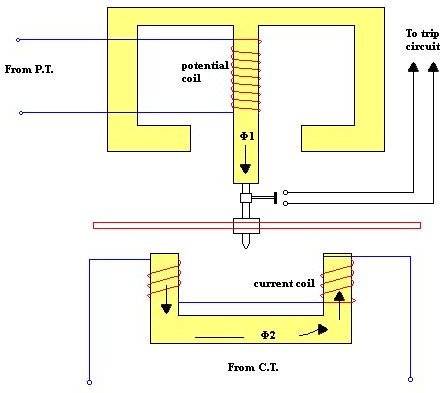
Introduction
In the previous article we learnt about the importance of alternator on a ship and a method for alternator protection - Over current protection and about preferential trips . In this article we will learn about two more methods for protecting alternators on ship - reverse power protection system and under voltage protection.
Reverse Power Protection
There is not much difference between an alternator and electric motors from the engineer’s perspective. They are both based on similar principles. So just imagine what would happen if an alternator suddenly would act as a motor. This is only possible in systems where two or more generators are running in parallel .
Hence this type of protection system is used only if there is more than one alternator on board a ship. The system is designed in such a way that it will release the breaker and prevent motoring of alternator if a reversal of power occurs. This protection device is also used to prevent damage to the prime mover, which might be stopped due to some fault. Though it is extremely difficult to detect reverse current with an alternating current system, reverse power can be detected and protection can be provided by reverse power relay.
Construction and Working
The system consists of a lightweight non magnetic aluminium disc, which is mounted on a spindle having low friction bearings. This disc is placed between two electromagnets made up of soft laminated iron core. The upper electromagnet contains a voltage coil which is connected through a transformer between one phase and an artificial neutral of alternator output. The lower electromagnet also contains a current coil which is supplied from the same phase with the help of a transformer.
The voltage coil is particularly designed with a high inductance so that it can lag current in the coil by an angle approaching 90 degrees. Due to this lag, the magnetic field produced by the current also lags the magnetic field in lower electromagnet. When both these field passes through the aluminium disc, production of eddy currents take place, which results in a torque that tries to rotate the disc.
Under normal power flow, the trip contacts on the disc spindle are open and the disc bears against a stop.When reverse power occurs , the disc rotates in other direction and moves away from the stop and moves towards the trip relay. A time delay of 5 seconds is also provided so as to prevent tripping during synchronizing process. The general reverse power settings are 2 to 6% for turbine power movers and 8 to 15% for diesel engines .
Under Voltage Protection
This method is used to prevent closure of the breaker by mistake, or the generator that is coming on load during parallel operation. It also provides protection against loss of voltage while machinery is connected to the switchboard .
In this system tripping is generally delayed for discrimination purposes. This is done so that the voltage drop is caused by fault and time is allowed for the appropriate fuse or breaker to operate and the voltage to be recovered without the loss of power supply
Image References
Marine electrical equipment and practice - H.D Mc George

MARINE ELECTRO TECHNICAL OFFICER
BEST TIPS TO AWE INSPIRING CAREER AS ETO
Electrical safety training – loto (lockout/tagout), jobs ashore for eto after quitting from merchant navy, egcs – detailed overview, ultimate bearing guide & facts for eto, suez canal transit checks eto must know, vfd (variable frequency drive) complete guide, list of solas regulation every eto must know, marine alternator maintenance guide, ship eto & etr major difference, programmable logic controllers complete guide, overview of navigation equipments used in ship, me engine electronics full guide, me engine mpc (multi-purpose controller), qna: msbd (main switchboard).
Q. What is the IP(Ingress Protection) degree provided for MSBD ?
Q. What are the safeties protection provided by ACB?
A. In above list, Some are optional It may have or may not
- Adjustable Long Time Delay Trip -LTD (Normally 105 to 120% of Full Load Current, Trip time from 20 to 120 seconds)
- Adjustable Short Time Delay Trip -STD (Normally 200 to 600% of Full Load Current, Trip time from 0.1 to 1 seconds)
- Adjustable Instantaneous Trip -INST (1000% of Full Load Current, Instant Trip)
- Adjustable Pre Trip Alarm -PTA
- Adjustable Ground Fault Trip -GFT
- Under Voltage Trip -UVT (set at 50% of rated voltage)
- Arc Contacts, Arc Runner, Arc Chutes
Q. What are the safeties provided for MSBD?
A. Following safeties are provided
- Overload protection
- Under frequency protection(58Hz trip,59Hz alarm)
- Over frequency(62Hz trip,61Hz alarm)
- Under Voltage protection(80% of rated voltage,120% of rated voltage)
- Over Voltage Protection
- Reverse Power protection
- Preferential trip protection.
- Continuos Insulation Monitoring is also provided.
- No liquid line over MSB
- Ebonite Handrail
- Approved insulation rubber and Gloves ( It should sustain 15KVA for at least 1 minutes)
- 0.6 meter clearance area all around MSB(For High Voltage its 1 meter)
- Danger, High Voltage, Precaution against electric shock, Burn Playcards
- Circuit diagram of MSB should be near MSB
- MSB is installed in less vibration area of ship
- 1 portable CO2 extinguisher near MSB
Q. How the reverse power is detected?
A. It is difficult to determine the direction of AC to make tripping of generator during motoring. For this purpose the reverse power relay utilizes technique of monitoring current lagging direction to voltage. During sourcing (Generating)the current will lag the voltage by some angle positive way. During motoring of generator this positive lagging to voltage will change to negative lagging to voltage. This change in phasor angle will cause the aluminium disc inside the relay to rotate in opposite direction causing to trip the ACB
Q. What are setting values for reverse power relay?
A. 15% of KW for 4 stroke engine, 25% for 2 stroke engine at synchronous speed. For steam turbine 3% of KW.
Q. What is preferential tripping?
A. When Generator load reaches 110% trip operates after a fixed time delay causing non-essential loads to be shed in order to avoid overload on generators. The tripping sequence is as follows:
First tripping at 5 sec: Shut down non-essential loads [air condition, entertainment, accommodation fans, cargo hold fans, amplifiers, etc.] to reduce the generator load. Second tripping at 10 sec: Shut down essential loads [services required for running the ship properly, leaving the loads of top priority services to maintain Propulsion and Navigation. if generator load is still high. Third tripping at 15 sec: Shut down the main generator as last action, if the load is still too high, it may be due to short circuit or insulation breaking.
Q. What is mechanism of Preferential tripping?
A. Now PLC or Embedded system based PMS(Power Management System). Earlier Dashpot & Timers was used.
Q. What are the methods of synchronization?
A. Synchroscope, Bright Lamp Method, Dark lamp method, Voltmeter method.
SYNCHROSCOPE METHOD: When the incoming generator frequency is same as bus bar frequency say 60Hz and indicator in synchroscope rotates slowly clockwise(about 5 to 7 seconds per revolution). The incoming generator breaker is closed when indicater indicates 12 o clock position in Synchroscope Usually at 11 o clock closing action is taken by personnel because of human response time.
DARK LAMP METHOD: Two lamps are connected to same phase of incoming generator and busbar. Flickering of lamps are monitored. Flickering must be slow and when both lamps are dark ACB is closed.
BRIGHT LAMP METHOD: Two lamps are connected to different phase of incoming generator and bus bar. In phase condition is shown when both lamps are equally bright.
VOLTMETER METHOD: Connect Analog voltmeter(except up to 500V on a 440V system). This procedure is done safely behind synchroscope terminals. Check circuit diagram of synchroscope before doing it. Adjust generator speed until voltmeter move very slowly from zero to maximum and close the breaker when the voltmeter indication passes through zero.
Q. What is Dead-Front Switchboard & Dead Switchboard?
A. Dead-Front switchboard is one with insulated switches and no exposed terminals on front.
Dead-SwitchBoard is one in which there is no supply available
Q. What is Sequential starting?
A. The Automatic starting of Essential machineries after power is restored from Blackout condition. Following is the general sequence starting of machineries.
Immediate starting machineries after power restored without any delay: 1)Steering gear 2)Fuel Oil Feed & Booster pump 3)Radio & Navigation Equipment 4)Engine Room & Accommodation Lighting 05 Secs after main power is restored: 1) Stern Tube Lube oil pump 2) Main LO Pump 10 Secs after main power is restored: 1) MCSW P/P 2) LT CW P/P 3) M/E JCW p/p 15 Secs after main power is restored: 1) Deck seal water p/p 2) Aux.Boiler & Comp.Boiler Feed p/p 20 Secs after main power is restored: 1) All E/R fans 2) Fire & GS Pump
LIKE POST? PLEASE SHARE
Leave a Reply Cancel reply
Your email address will not be published. Required fields are marked *
Save my name, email, and website in this browser for the next time I comment.

- STCW Training
- Crewing Directory
- Yachts news
- Marlins English Test Trainer
- Maritime Ships Database
- Working Offshore
- Terms & Conditions
Operate Alternators, Generators. Test 3
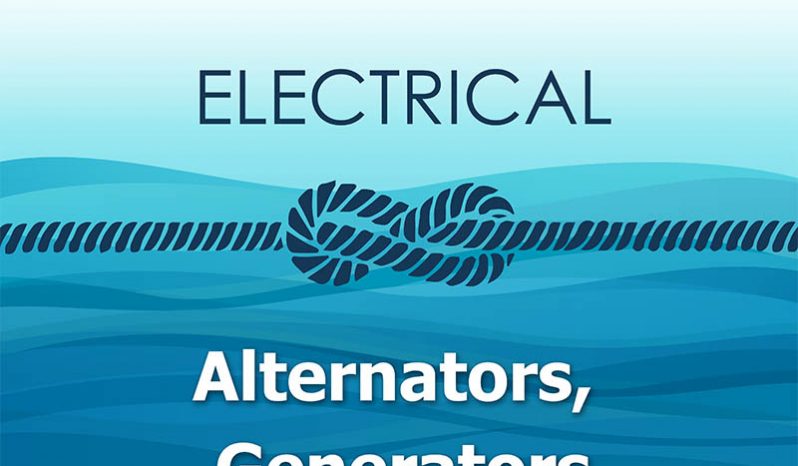
- The temperature of the windings due to load distribution.
- The power throttle of the driving units.
- The number of pole pairs of each paralleled alternator.
- The excitation current.
- 254.34 Volt.
- The under voltage trip.
- The overload trip.
- The reverse current trip.
- The high/low frequency trip.
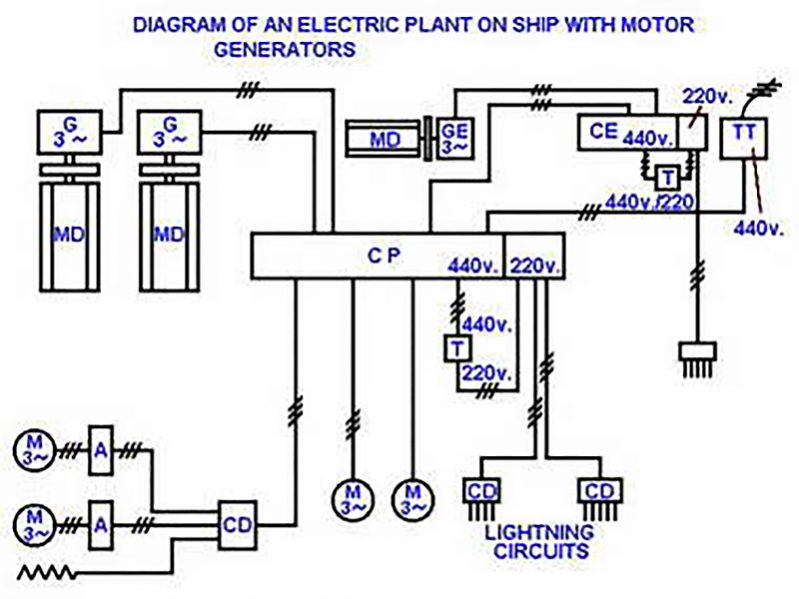
- monitored and supplied via distributors.
- fed into and distributed to the motors via starting boxes.
- fed into, monitored and supplied to the consumers.
- generated as distributed.
- The overspeed trip.
- The preferential trip.
- The low frequency trip.
- The emergency generator which is currently on stand-by has been splashed with salt water.
- The TV aerial in the mess room has short circuited.
- The armature of a switched off AC motor has short circuited.
- A connection box has been filled with salt water.
- It prevents breaker operation in the absence of voltage.
- All of these.
- It disallows breaker to be put on load by under voltage.
- It trips the alternator by under voltage.
- Very much longer.
- No difference.
- the generator and the bus bars.
- the breaker connecting bars.
- the breaker and the consumers.
- the generator and the consumers.
- 3 - 5 seconds.
- 7 - 8 seconds.
- 1 - 2 seconds.
- 5 - 7 seconds.
Request car price
Marine Engineering Study Materials
Information for marine engineers.
MEO Orals on Marine Electro Technology Function 5- Part 2
November 2, 2015 Jaz Comments 0 Comment
What is essential load .
- Essential services are those required for the safety of personal and for the safe navigation and propulsion of the ship.
- They include certain supplies to navigation aids, machinery spaces, control stations and steering gear.
What is non-essential load ?
- It is a load that has no effects on the safe navigation and main propulsion unit when they are cut off.
- They are a ir conditioning system, some blower fan except E/R blowers, galley power, r efrigerated cargo plant, d eck equipment, purifier, air compressor, cabin power source except lighting
What is dash pot, where fitted ?
- It is a mechanical device which makes time lag of trip with different viscosity of oil.
- It is fitted in overload trip, p referential trip, u nder voltage release / trip
What is dash pot ?
- Dashpots are fitted for overload trip to get time delay action, so that breaker will not be opened, due to momentary current surge
- When load current is in excess, it attracts plunger of the solenoid
- Plunger or piston moves up against the displacement of viscose oil or silicone fluid, through a small hole on the piston
- Time lag depends upon hole size, and viscosity of oil
- Load current setting for trip is about 25% above maximum, but should not exceed 50%
What is preferential trip ?
- It is a generator protection device which is designed to disconnect nonessential load from the main switchboard in the event of generator over load or partial failure of the supply.
- Operate after a fixed time delay, causing non-essential loads to be shed
- Usual setting for overload trip is 150% load (50% overload)
- When generator load reaches 110%, preferential Trip comes into operation as follows
First tripping at 5 sec
- Shut down non-essential loads (air-condition, entertainment, accommodation fans, cargo hold fans, amplifiers, etc.) to reduce the generator load
Second tripping at 10 sec
- Shut down essential loads (service required for running the ship properly, leaving the loads of top priority services to maintain propulsion and navigation) if generator load is still high
Third tripping at 15 sec
- Shut down the main generator as last action, if the load is still too high, it may be due to short circuit or insulation breaking.
What is the purpose of reverse power relay ?
- If prime mover failure occurred, the generator would act as a motor; the reverse power relay detects this fault and acts to trip the generator circuit breaker.
What is fuse ?
- Fuse is a protecting device in the circuit against damage from excessive current.
- It is fitted in a circuit to protect the circuit from short circuit and over load.
- Once a fuse is blown, it must be replaced.
Difference between Circuit Breaker and Fuse ?
Circuit breaker
- Has switching actions to close the circuit or to open the circuit, and has a trip circuit if load current exceeds the set value
- After tripping, circuit breaker can be reused without replacing any part
- Have only breaking function, and fitted in the circuit to protect the circuit from damaging effect of high current flow
- It breaks the circuit by melting the fuse metal itself
- After breaking, the blown fuse must be renewed
What is an intrinsically safe circuit or equipment ?
- An electrical circuit or part of a circuit is intrinsically safe, if any spark or thermal effect produced normally (e.g. by breaking or closing the circuit) or accidentally (e.g. by short circuit or earth fault), is incapable of igniting a prescribed gas mixture, under prescribed test condition.
- An equipment, which cannot released sufficient electrical or thermal energy, under any condition to ignite a particular flammable vapour in its vicinity.
What is primary cell ?
- It is a chemical cell in which it is possible to transform chemical energy into electrical energy.
- It cannot be recharged.
- The internal resistance of a primary cell is usually high
- Capacity of cell low
- Voltage per cell is also low
- Simple cell consists of copper plate (positive plate) and zinc plate ( negative electrode) and dilute H2 SO4 acid.
What is secondary cell ?
- It is a chemical cell (accumulator) which store up electric energy converting chemical substance into another form while charging.
- The stored electric charge in chemical form transforms back electrical energy.
- It has two types [lead acid and alkaline (Nickel Cadmium battery) type].
- It has low internal resistance
- Capacity and voltage per cell is high.
Oral Guide by – MIN ZAR TAR
Related Posts

Leave a Reply Cancel reply
Your email address will not be published. Required fields are marked *

COMMENTS
A preferential trip is a kind of electrical arrangement on the ship which is designed to disconnect the non-essential circuit i.e. non-essential load from the main bus bar in case of partial failure or overload of the main supply ... how to test the preferential trip and overload trip while generator running in parrellel. ananthan says ...
Depending on the vessel electrical layout and design, there are different stages (two or three) of preferential tripping. For example: if the current on a running generator exceeds 100% of the generator rating for a period exceeding 5 seconds, the PMS will initiate the release of the 1st stage preferential tripping (PT1), thereby providing protection against the overcurrent which would ...
There are two very important safety system on our Main Switchboard and these are the Preferrential trip and Revere Power Trip.here is the step by step guide ...
Preferential trip is a part of the ship's generator protection system. The tripping system is designed in such a way that it removes all non essential loads from the generator in case of overload or partial failure of supply, thus preventing main power loss on the bus-bar. In order to learn about the working of preferential trip, it is ...
The current passes through the coil in the preferential trip circuit which pulls the piston in the dash pot arrangement. The movement of the piston is governed by the diameter of the orifice and the time delay made by the same. The preferential trip operates at 5,10, & 15 seconds and the load is isolated accordingly.
When the generator becomes overloaded, the preferential trip relay gets operated with an alarm to trip the selected non essential loads. ... Each generator has its own preferential trip and overload trip. These trips are installed between generator and busbar. Overload trip is set at 150% current with 20 second time delay and preferential trip ...
0. Preferential trip on ship. Preferential tripping in ships is to avoid total black out in the ship. >Operate after a fixed time delay, causing non-essential loads to be shed. >Usual setting for overload trip is 150% load [50% overload]. >When generator load reaches 110%, Preferential Trip comes into operation as follows. First tripping at 5 ...
Preferential trip is a part of the ship's generator protection system. The tripping system is designed in such a way that it removes all non essential loads ...
Working of Preferential Trip. As shown in the diagram, when overload current increases and reaches the lower loads of the system,the bottom lever pulls up and completes the circuit. The completion of the system gives an alarm signal and supplies current to the overload trips which are set for 5, 10 and 15 seconds ...
A hardwired preferential trip, then, becomes, an essential requirement of the system in order to prevent sudden blackout. ... For instance, one generator running at 30% load may be more fuel efficient than 2 running at 15% and, conversely, one generator running at 70% may consume more fuel than 2 running at 35% load each. Thus, performance ...
The preferential trip operates at 5, 10 and 15 seconds and the load is removed accordingly. If the overload still persists, then an audible and visual alarm is sounded. About Ram Govindasamy. Ram Govindasamy is a sailing marine engineer working for a leading cruise company. Ram founded Dieselship to create an online platform for Marine ...
Automatically Started Emergency Generator for Essential Services This generator is almost always connected to separate emergency bus bars in a dedicated switchboard, located away from the main generating station. ... excessive load, e.g. a preferential trip, which will shed the load that is considered non-essential for the immediate running of ...
Preferential Trip. Preferential trip is a kind of electrical arrangement on ship which is designed to disconnect the non essential circuit that is non essential load from the main bus bar in case of partial failure or overload of the main supply the non essential circuit all loads on ship are air conditioning, exhaust and ventilation fans, and ...
The preferential trip operates at 5, 10 and 15 seconds and the load is removed accordingly. If the overload still persists, then an audible and visual alarm is sounded. The preferential trip is one of those important electrical circuits, which help in removing the excessive load from the main bus bar, thus preventing situation like blackout ...
The main advantage of preferential trip is that it helps in preventing the operation of main circuit breaker trip and loss of power on essential services and thus prevents blackout and overloading of generator. Reverse power trip: There is not much difference between an alternator and electric motors from the engineer's perspective.
Usual setting for overload trip is 150% load (50% overload) When generator load reaches 110%, preferential Trip comes into operation as follows. First tripping at 5 sec. Shut down non-essential loads (air-condition, entertainment, accommodation fans, cargo hold fans, amplifiers, etc.) to reduce the generator load. Second tripping at 10 sec.
Introduction. In the previous article we learnt about the importance of alternator on a ship and a method for alternator protection - Over current protection and about preferential trips.In this article we will learn about two more methods for protecting alternators on ship - reverse power protection system and under voltage protection.
Re: Preferential Trip testing. by Big Pete » Fri Jul 07, 2017 3:32 pm. Used to be easy on Old Time ships but there is usually a much bigger reserve of power available from generators now. You might have to get an Electrician in with Current Injection Kit, to test the trip just like you do for testing main Breakers. It is always better to ask a ...
Adjustable Long Time Delay Trip -LTD (Normally 105 to 120% of Full Load Current, Trip time from 20 to 120 seconds) ... What is preferential tripping? A. When Generator load reaches 110% trip operates after a fixed time delay causing non-essential loads to be shed in order to avoid overload on generators. The tripping sequence is as follows:
Reverse Power Trip. When two or more generators are running in parallel and if one of the units starts drawing power from the main bus bar, it can lead to reverse power flow. It can cause overloading of the other power supply unit and hence leads to the preferential trip or may lead to total power failure (Blackout). The faulty unit may ...
The emergency generator which is currently on stand-by has been splashed with salt water. ... The preferential trip. The overspeed trip. The under voltage trip. The Main as well as the Emergency switchboard are panels where the electric power is _____ fed into and distributed to the motors via starting boxes.
What is preferential trip ? It is a generator protection device which is designed to disconnect nonessential load from the main switchboard in the event of generator over load or partial failure of the supply. Operate after a fixed time delay, causing non-essential loads to be shed; Usual setting for overload trip is 150% load (50% overload)
30 June 2016, 07:41 PM. There are a few things which will trip the prefs such as a reverse power trip on a generator, an overcurrent on a breaker or certain alarms or signals from the power management system. These can either by properly tested, e.g. by reverse powering the generator, simulated by current injection or simulated in other ways.